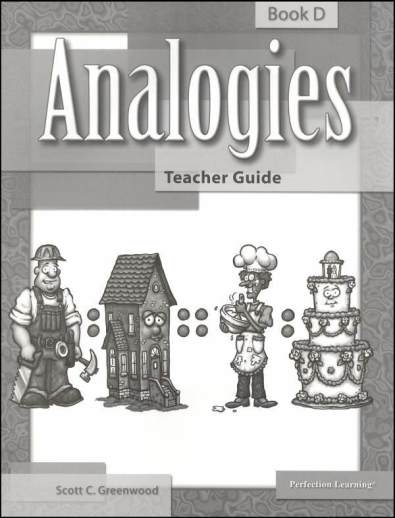We use cookies to make your experience better. To comply with the new e-Privacy directive, we need to ask for your consent to set the cookies. Learn more.
Analogies Book D Teacher Resource
Although analogies are present on every standardized test, there are many good reasons to practice solving analogies in addition to test preparation. Despite their relatively "simple" format, they help sharpen a wide variety of thinking skills - the ability categorize, differentiate between significant and insignificant information, recognize divergent relationships, compare and contrast, think sequentially, and improve vocabulary. This series does a nice job of introducing and practicing the various types and formats of analogies. For the most part, each book is divided into the following units: identifying relationships, solving analogies, analogy categories, and review and practice. Solving analogies is taught as a 3-step process with different types of analogies introduced, or reviewed, at each level. Each new analogy category is presented on a page with an explanation, directions, example, and several exercises. Review and practice pages call for analogy completion, or less frequently just relationship identification of the analogy types that have already been introduced. Student books are consumable; teacher guides contain directions for use, supplemental activities, and answers.
Practices 27 kinds of analogies: the 19 listed for Book C (except for Homonyms) as well as Worker-Product, Action-Meaning, New-Old, Mythological, Scientific, Literary, Historical, Sound Relationships, and Letter Relationships.
| Product Format: | Softcover Book |
|---|---|
| Brand: | Perfection Learning |
| Author: | Scott C. Greenwood |
| Grades: | 6-12 |
| ISBN: | 9780789158987 |
| Length in Inches: | 10.75 |
| Width in Inches: | 8.5 |
| Height in Inches: | 0.0625 |
| Weight in Pounds: | 0.15 |

